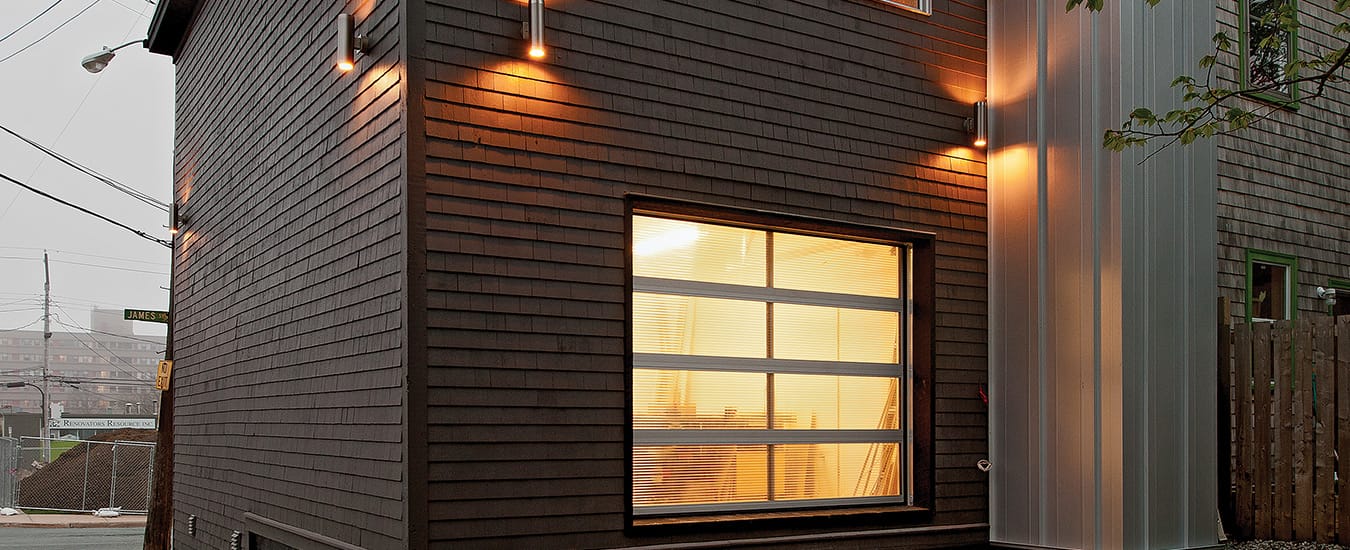Upscale paving products can get some stiff competition from humble aggregate
THERE’S NO denying that gravel can be a little rough around the edges. Some might go so far as to say it’s a bit coarse. Lack of refinement aside, gravel deserves more respect—and not just because it’s the very foundation of our modern infrastructure—but also because it’s the landscaper’s new best friend for impressive hardscaping at a rock bottom price.
In the world of decorative landscaping, gravel is traditionally cast in a supporting role, taking a backseat to concrete pavers and natural stone. Yet there are definite advantages to an inexpensive material that won’t ever crack and heave in our challenging winter climate.
“Well-graded gravel drains water to control erosion and minimize damage from the freeze thaw cycle,” says Garth Prime, a geologist with Nova Scotia’s Department of Natural Resources and an enthusiast supporter of gravel as one of our most valuable material resources.
Prime offers a whirlwind geology lesson that traces the evolution of gravel in Atlantic Canada to the beginning of time. The highest quality products, he says, are blasted from bedrock in quarries. A secondary source is excavated from the glacial deposits of gravel and sand found in many of the rolling hills that dot our rural landscape.
Whether blasted from boulders or excavated from a pit, gravel is screened and graded into several standard sizes and qualities (see sidebar). Economical and easy to install, it’s just the ticket for a variety of hardscaping projects.
“For one thing, it won’t blow away,” laughs Lyn Duchesney, the owner of a landscaping business in Baddeck NS, “so it’s the ideal material for coastal areas that see big winds.”
She likes the fact that the gravel she gets is a local product, and also that it comes in a range of colours—especially the burgundy shade she used in a walkway for the hospice garden at Victoria County Memorial Hospital. “It’s really striking,” she says. “In this area it has become so popular that it’s getting hard to find.”
Much of the quarried gravel in Atlantic Canada is granite, with colours that vary from gray and brown to blue-grey, burgundy, coral and the pink so often seen in driveways on Nova Scotia’s south shore. “Different colours are accounted for by the type of rock in the region and variations in the rock vein,” says Reg Trainor, the owner of a large PEI company that supplies aggregate throughout the Maritimes.

The best advice when considering a colour other than grey is to choose a shade that works with the general palette of the exterior of the home and with the property’s natural stone and earth tone.
“Try to have it blend in with the surroundings rather than stick out,” says Mike Burns, president of a Halifax contracting firm that specializes in modern architectural design. “Using gravel in your landscaping plan is more about texture and maintenance than it is about making a statement.”
Burns buys gravel locally, usually opting for a two-toned, salt and pepper granite. “I think it’s the nicest quarry rock we have around here,” he explains. “We use it for many of our projects because it complements modern touches of steel and aluminum and picks up well on the grey, black and white tones that typify much of our work.”
For the exterior of his own office building, a 120-year old row house in Halifax’s North End, Burns ran salt and pepper gravel from the building’s foundation to the sidewalk as an alternative to grass and mulch.
“The office was all about texture and doing something a little different,” he says. “Gravel has softer lines and feels more natural than a paver or pavement path. And unlike hard surface landscaping that creates runoff from storm water that needs to be diverted or collected, gravel is a permeable material that helps that water get into the ground as quickly as possible.”
When hardscaping with gravel, a layer of two inches is usually deep enough to deter weeds. For pathways and small sections, Burns recommends a breathable underlay of the regular landscaping fabric sold at home supply stores; for larger applications, such as his yard, he suggests a special, heavy-duty industrial landscape fabric that feels almost like felt.
“Weed control is the major concern when clients think about gravel as a landscaping solution,” says Burns. “If you are selecting gravel for its low maintenance, the last thing you want is to spend your Saturdays picking dandelions.”
10 Tips
- Ask for advice before using gravel as mulch in a flowerbed. It is not the material of choice for certain plants such as rhododendrons.
- Pair gravel with pavers of the same shade to create a sense of fluidity and cohesion.
- Alternate large pavers or patio slabs with gravel in an open grid design to stretch your hardscaping dollar and provide a flat surface for walking.
- Keep cool with gravel as it doesn’t retain heat in the same way that concrete does.
- Place patio slabs and pavers strategically to create a stable surface in an expanse of gravel.
- Use sharp-edged gravel on slopes to prevent movement.
- Use round-edged gravel in playgrounds and other areas where little knees may hit the ground.
- Use smaller pieces of gravel for walking paths and larger cobbles for retaining walls and dividing lines.
- Rake gravel to dislodge weed seeds.
